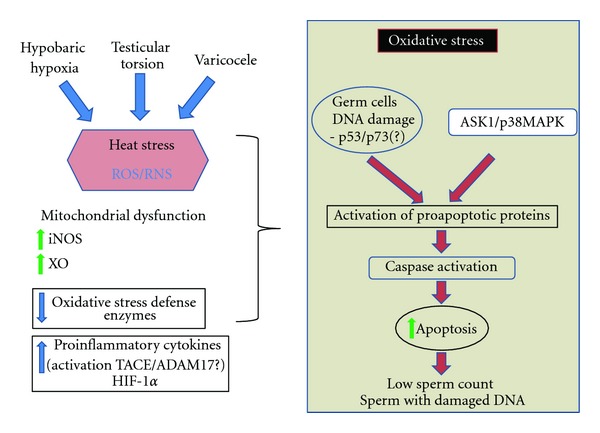Figure 2.

Diagram of molecular and cellular events triggered by hypobaric hypoxia (HH), testicular torsion (TT), and varicocele (Var). This model suggests that HH, TT, and Var have a common mechanism of action at the testicular level by inducing oxidative stress owing to an increase in reactive oxygen and nitrogen species (ROS/RNS) formation and impairment in the oxidative defense mechanisms. Experimental evidence points to heat stress in HH and Var, but this parameter has not been determined in TT. The increase in ROS/RNS is probably owed to mitochondrial dysfunction along with activation of enzymes such as xanthine oxidase (XO) or the inducible nitric oxide synthetase (iNOS). Oxidative stress induces activation of p53, p73, and ASK/p38 MAPK, which stimulate the activation of proapoptotic proteins (e.g., BAX) that in turn will lead to caspase activation and increase in germ cell apoptosis. The induction of proinflammatory cytokines is probably part of the response mechanism to cellular damage.
